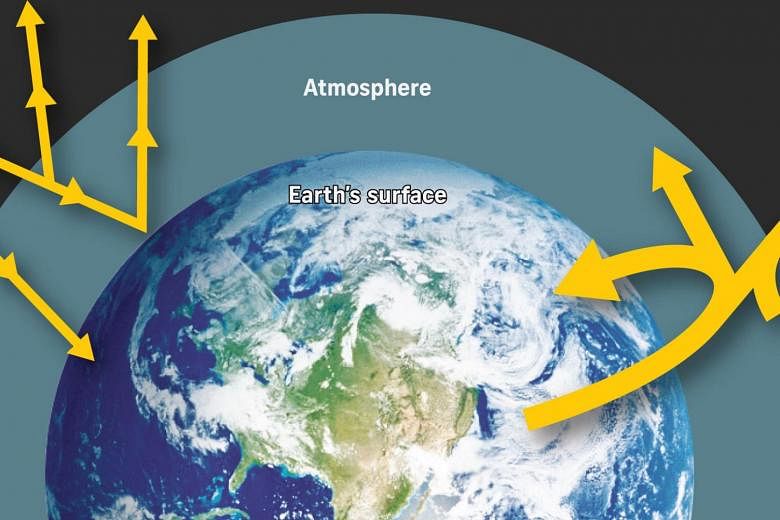What is climate change?
The blue-green earth is a warm globe travelling through freezing space. The thin blanket of the planet's atmosphere makes life possible, with the global average temperature around 15 deg C.
Greenhouse gases such as carbon dioxide (CO2), methane (CH4) and nitrous oxide (N2O) help trap the sun's warmth, just like the glass of a greenhouse does.
Over millennia, the levels of these gases, especially CO2, have varied and so have temperatures.
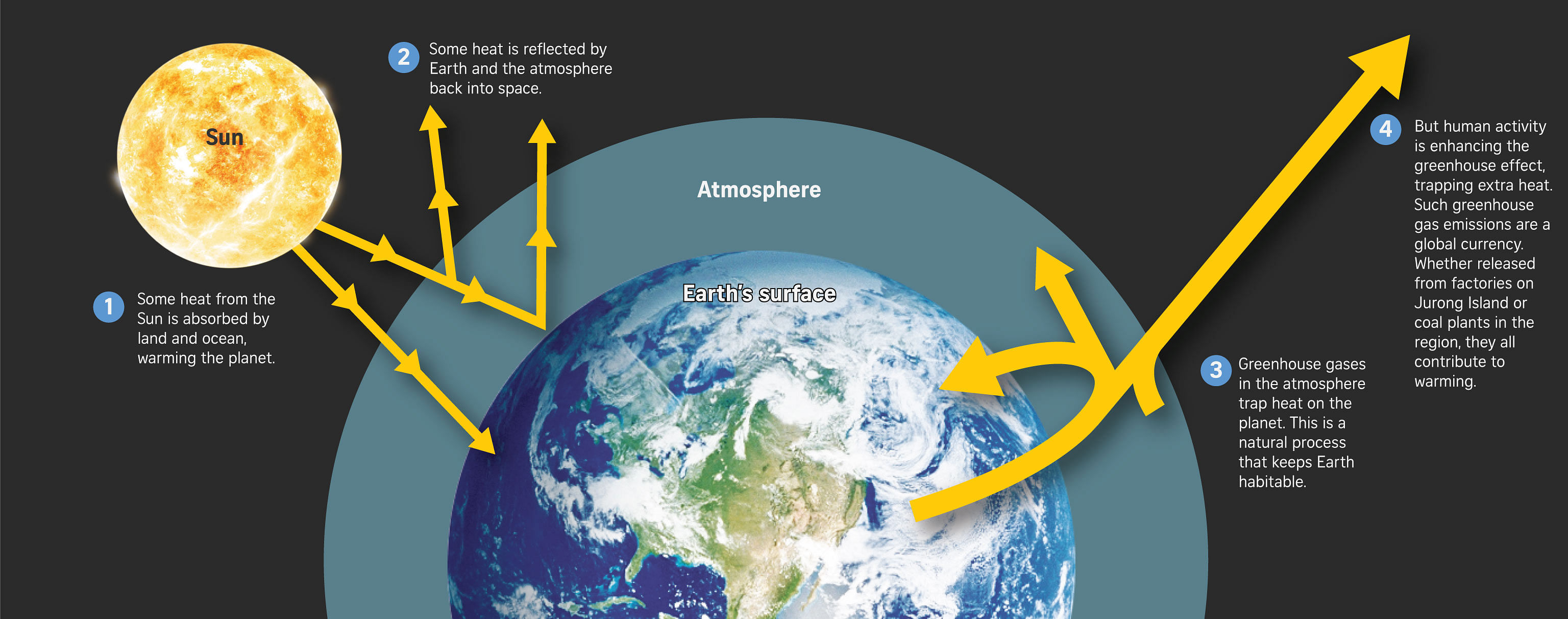
The difference now is that mankind's activities are adding so much CO2, CH4, N2O and several other potent greenhouse gases, that things are heating up very quickly. Much faster than in the past.
CO2 levels are now the highest in 3.5 million years and this rise has occurred in little over a century, most of it in the past 50 years. Average temperatures globally are now 1.2 deg C higher than pre-industrial times.
This means humankind is moving into a world we have never experienced. The natural world is also struggling, with hotter temperatures, hotter oceans, droughts and extreme weather events threatening the future of many species.
Why have greenhouse gases risen so quickly?
The simple answer is rapid population growth and an insatiable demand for resources to fuel economic expansion. Burning fossil fuels - coal, oil and gas - is mainly to blame. But deforestation and agriculture, too.
Consumption of fossil fuels, coal especially, has soared in recent decades. Though developed nations are responsible for the bulk of accumulated emissions, a major source of recent emissions growth has come from big developing nations such as China, India and Indonesia. As shown in the graph below, China's emissions are now about double those of the United States, the world's second top CO2 emitter.
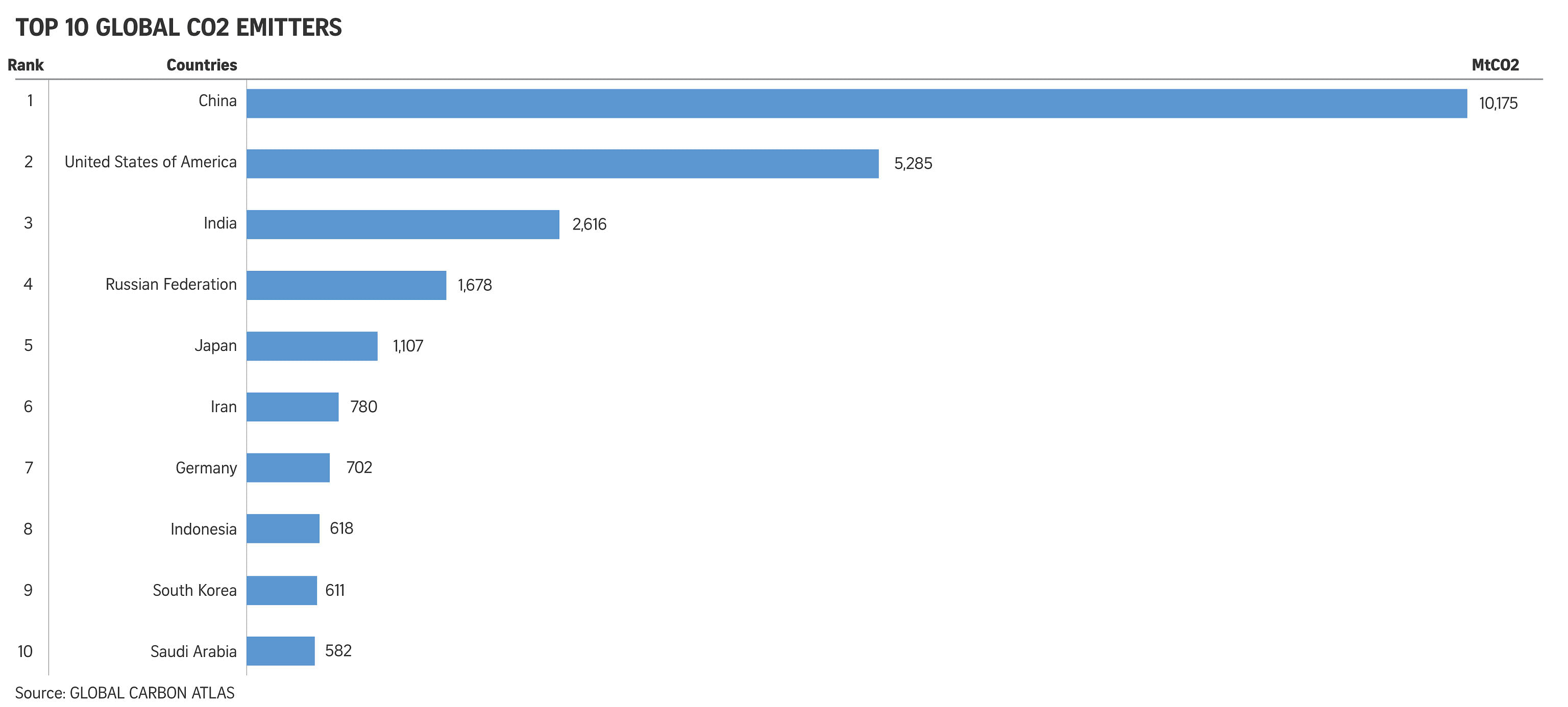
China is the world's top coal producer and consumer, relying on coal for nearly 60 per cent of its energy needs. In an effort to curb the growth of coal use and meet rising demand for electricity, China is also the world's top renewable energy investor. But displacing coal remains a huge challenge.
Rapid expansion of coal-fired power stations in China has caused emissions to soar - China is now by far the world's largest greenhouse gas emitter, producing about 28 per cent of mankind's carbon emissions - mostly from coal. Over the past three decades, oil and gas consumption has also risen sharply.
Big developing nations are now the largest source of greenhouse gas emissions growth, while emissions from the US and European Union have been declining as they switch to cleaner sources of energy.
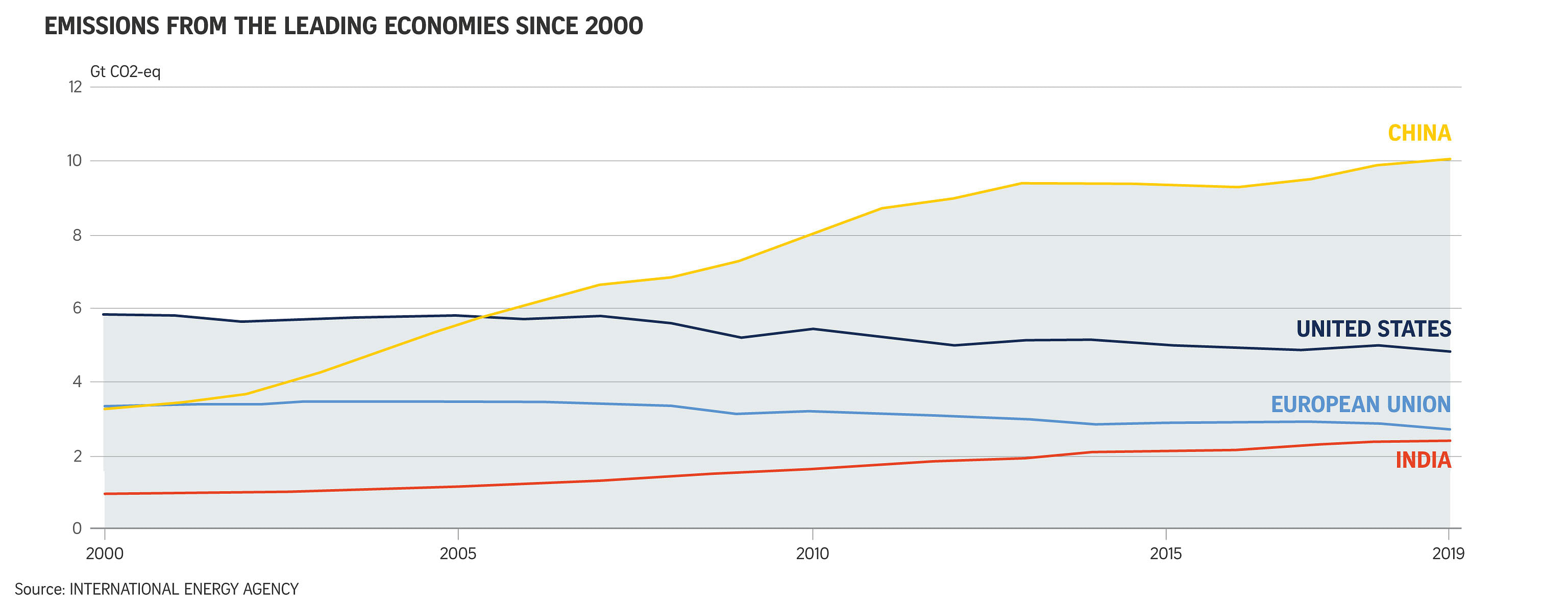
Historically, though, the US has been most responsible for humanity's share of CO2 in the atmosphere since the start of the industrial age.
A recent analysis by Carbon Brief looked at the nations historically responsible for most of the CO2 emissions that have accumulated in the atmosphere since 1850.
Included were emissions from fossil fuels and cement production and from land use change and forestry - mainly deforestation.
Carbon Brief found that the US, China and Russia account for nearly 40 per cent of accumulated CO2 emissions from human activity.
Brazil and Indonesia (ranked fourth and fifth) are responsible for another 8.6 per cent, largely because of decades of deforestation. Germany comes next in the top 10 list, followed by India, Britain, Japan and Canada.
Deforestation and forest fires are big sources of CO2. Trees naturally soak up large amounts of CO2 from the air for photosynthesis, storing the carbon in their trunks, roots and the soil. Chopping them down stops this and rotting and burning timber releases lots of CO2.
Burgeoning demand for food, especially grains, meat and vegetable oils has led to millions of hectares of forest being cleared to create farmland.
Recent research published in the Nature Food journal found that the global production of food is responsible for a third of all greenhouse gases from human activity.
The production of meat, as well as livestock feed, is responsible for 57 per cent of all food production emissions, the research found, with 29 per cent coming from the cultivation of plant-based foods.
How has the world reacted to the threat?
The risks and causes of climate change have long been known, with the United Nations creating a special climate science body, the Intergovernmental Panel on Climate Change (IPCC), in 1988.
More than half of all cumulative global CO2 emissions from human activity have taken place since 1990, just as international climate science efforts and climate diplomacy were getting off the ground.
The chart below from the Global Carbon Atlas shows annual growth in CO2 emissions, which have grown especially strongly since 2000.
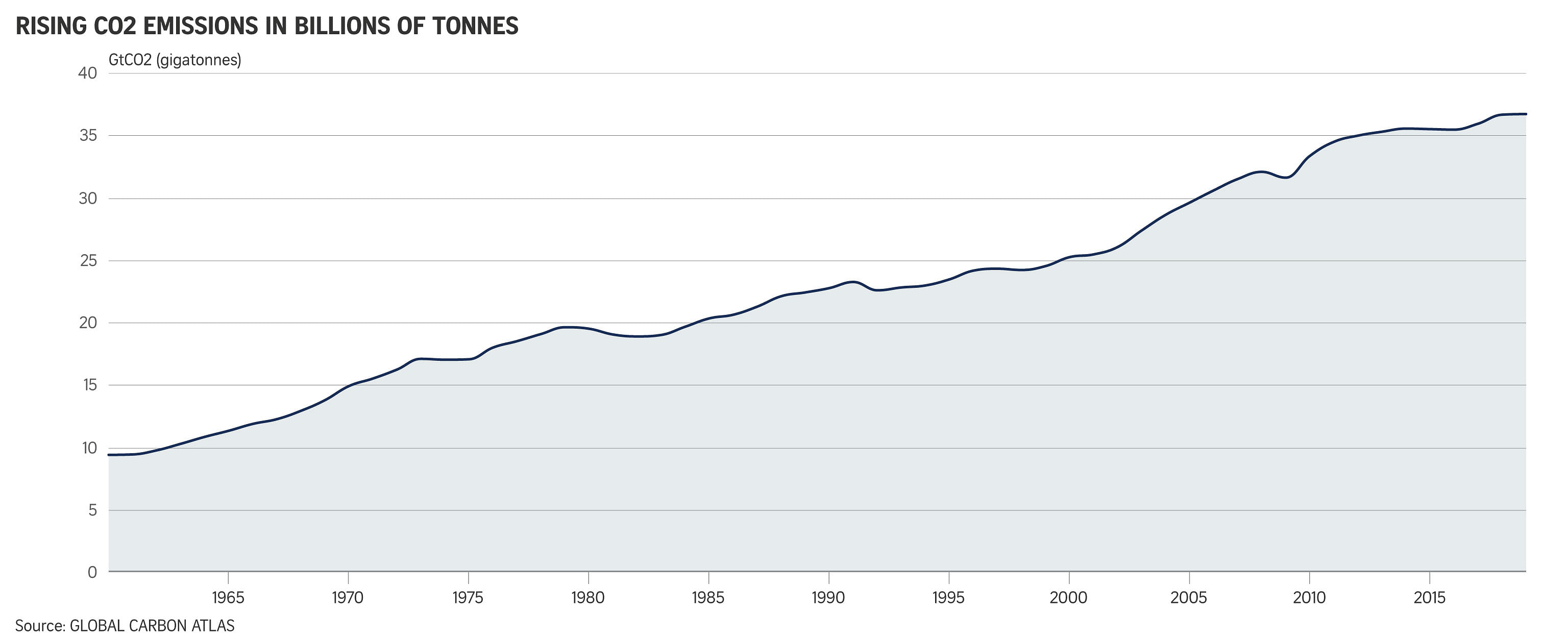
In 1990, the IPCC issued its first report on the science and risks of climate change. The report "underlined the importance of climate change as a challenge with global consequences and requiring international cooperation".
Since then, the IPCC's reports, issued every five to six years, have made progressively stronger conclusions about the threat from climate change and that mankind is unequivocally to blame.
In its most recent report in August 2021, the IPCC concluded that climate change is widespread, rapid and intensifying with some impacts, such as sea level rise, now irreversible over hundreds to thousands of years.
As temperatures rise, the intensity and severity of events, such as heatwaves, flooding rains and droughts increases. The greater the average global warming, the worse things become.
As shown in the chart below, under current conditions -- with global average temperatures rising 1 deg C since pre-industrial times (today) -- extreme heat events are already happening 2.8 times more often than they did between 1850 and 1900. If temperatures were to rise to 1.5 deg C, the chances of extreme heat events would spike to 4.1 times more often.
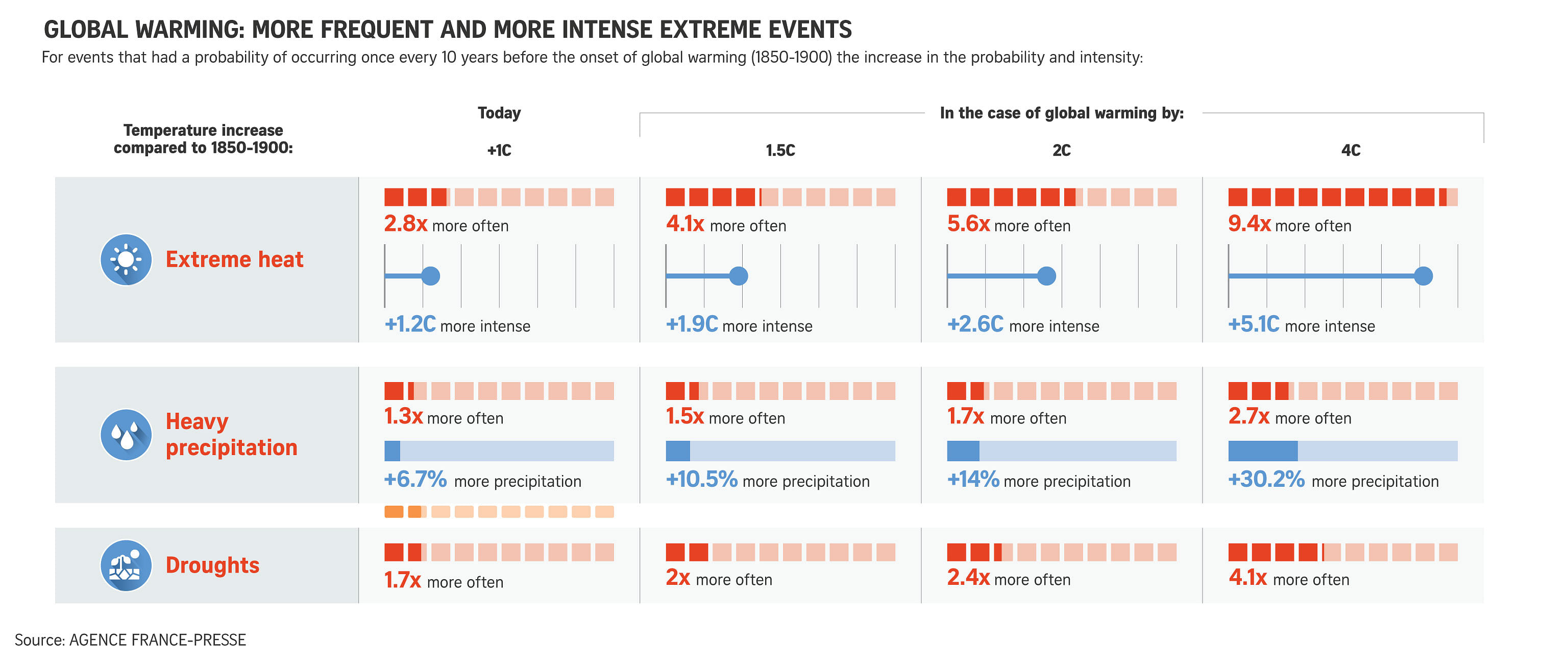
Yet, despite the warnings, the years of scientific evidence and the sharp increase in the severity of extreme weather events, many governments have been slow to act.
Emissions have kept rising and temperatures along with them.
Think of climate change as a runaway train. Only deep and swift emissions cuts, acting like powerful brakes, will slow the train before the bend ahead.
So where are we now?
The IPCC says warming could hit 1.5 deg C within a decade unless carbon emissions are dramatically cut.
As the chart below shows, global average temperatures have been rising quickly since the 1970s in line with rapid global economic growth and rising fossil fuel consumption.
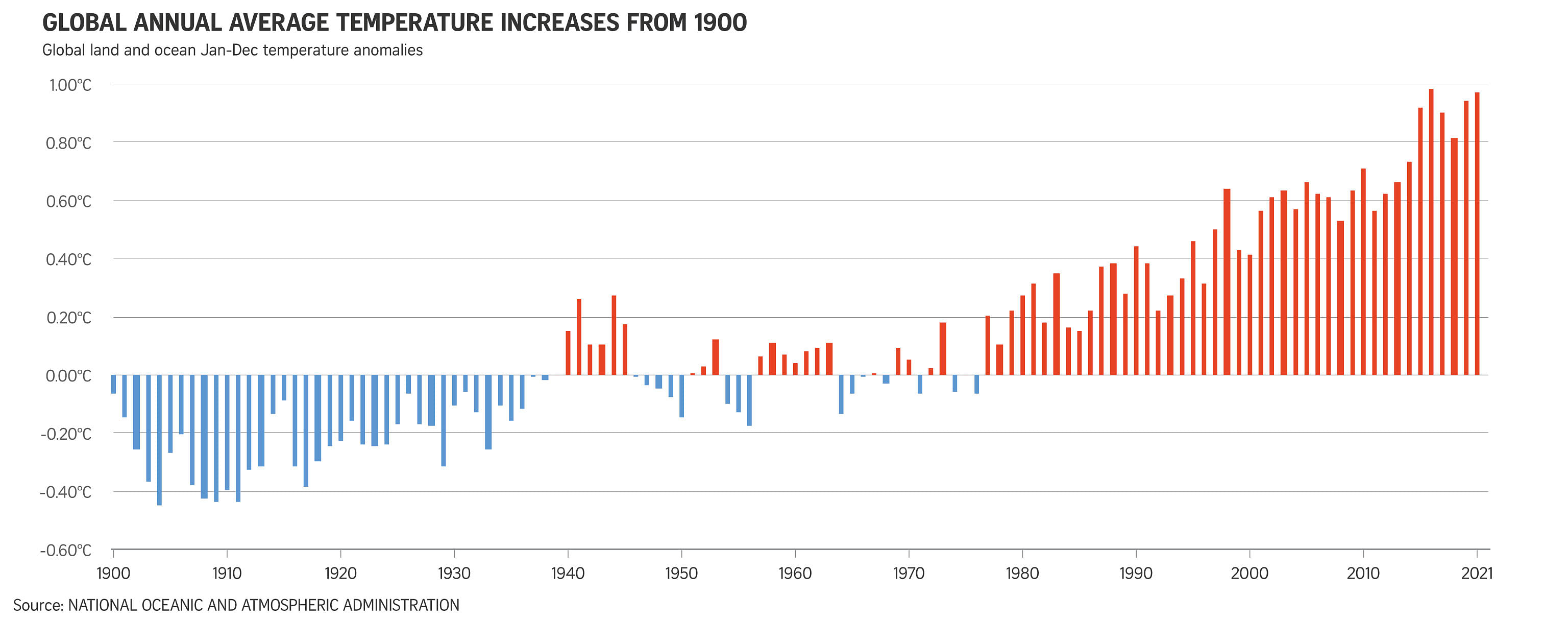
Beyond the 1.5 deg C temperature threshold is a future with far more intense weather extremes that threaten human health and livelihoods.
Every half a degree rise in temperature matters, says the IPCC, and a 2 deg C rise would lead to higher crop losses and near total destruction of coral reefs as we know them. Reefs are already under severe pressure - the Great Barrier Reef has lost 50 per cent of its shallow water coral cover in just a few decades.
Yet, current climate pledges of all nations are putting the world on a path to warm 2.7 deg C by the end of this century, a level that will greatly accelerate sea level rise as ice caps in Antarctica and Greenland melt faster.
Satellite data shows the Greenland and Antarctic ice sheets are losing ice six times faster than they were in the 1990s.
What happens next?
Twenty-six years of climate diplomacy comes to a head at a major UN climate meeting in Glasgow from Oct 31 to Nov 12, called COP26.
Since the first meeting, COP1 in Berlin in 1995, nations - especially rich nations - have been under pressure to cut emissions to limit global warming. But progress in the UN climate diplomacy arena has been slow and failed to limit rapid growth of emissions in the atmosphere or rising temperatures.
The overall goal for COP26 is for nations to step up emissions cuts to keep the 1.5 deg C warming limit within sight. And to finally achieve US$100 billion (S$135 billion) in annual climate finance for poorer, vulnerable nations.
Several major polluting nations, including China and India, have yet to announce their new or updated climate pledges as mandated under the 2015 Paris climate agreement. Under the Paris pact, nearly 200 nations agreed to limit warming to "well below" 2 deg C and aim for 1.5 deg C if possible. Getting there means net-zero emissions by 2050.
COP26 is regarded by the UN as the last chance to avoid a climate catastrophe. But the recent surge in demand and prices for coal, oil and gas show that weaning the world off fossil fuels will not be easy or quick.
So while the rhetoric around ambition will reach fever pitch in Glasgow, the economic realities and vested interests could temper the outcome.
